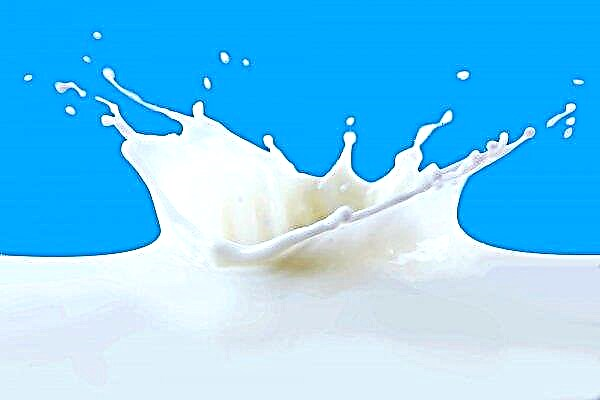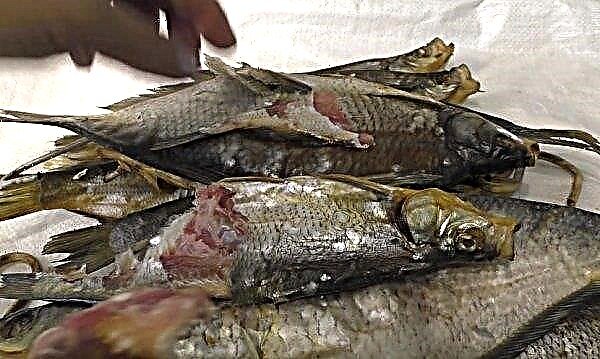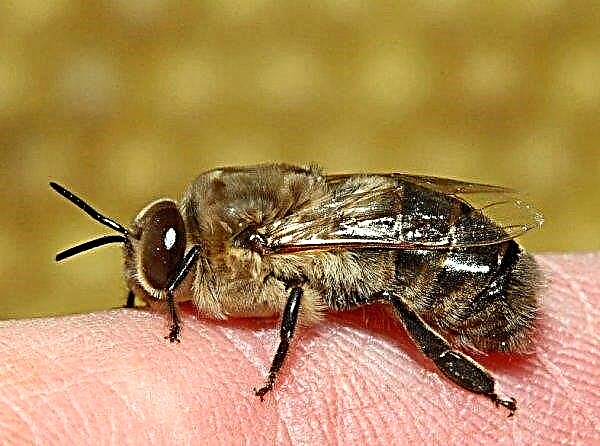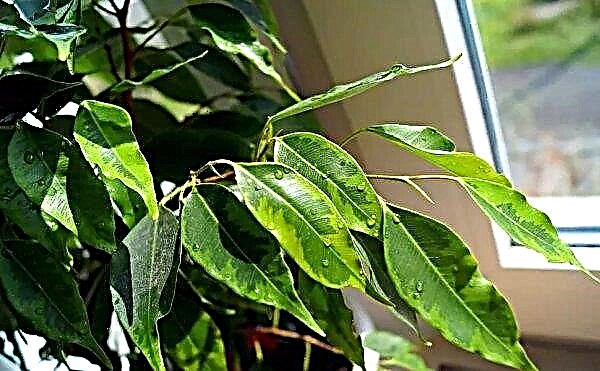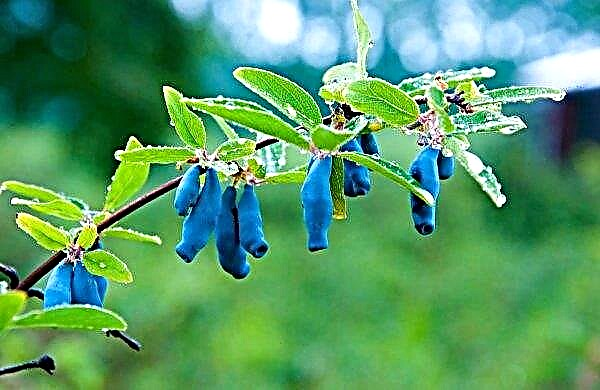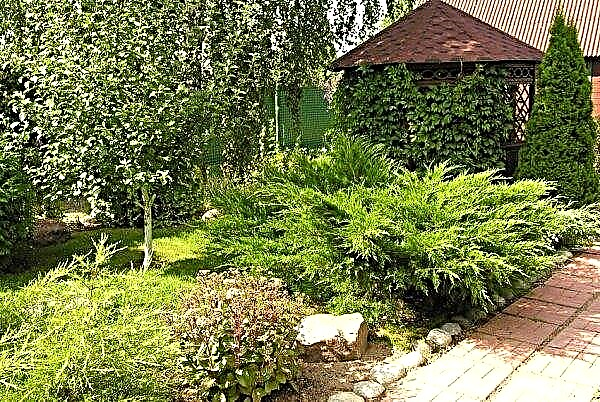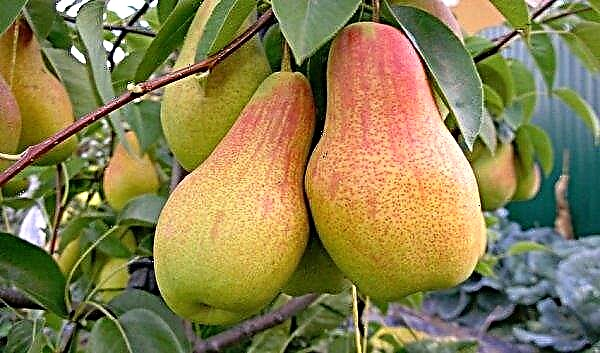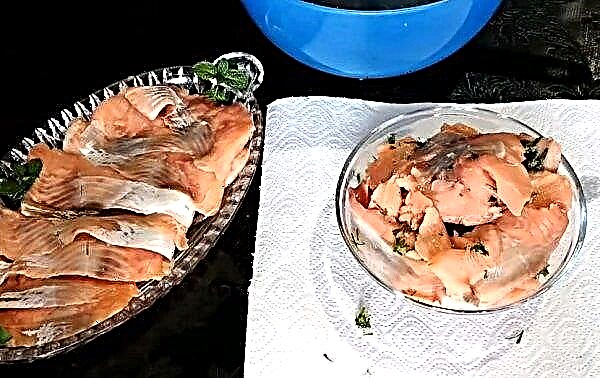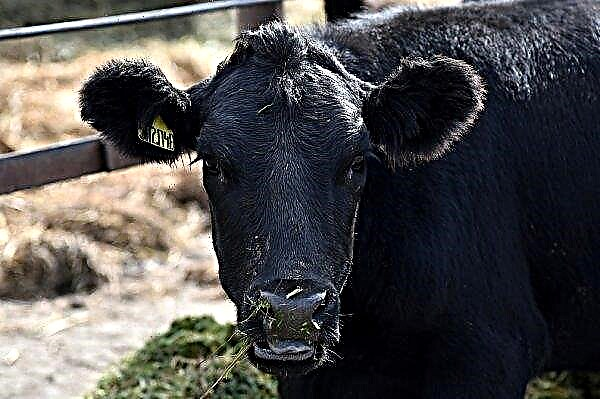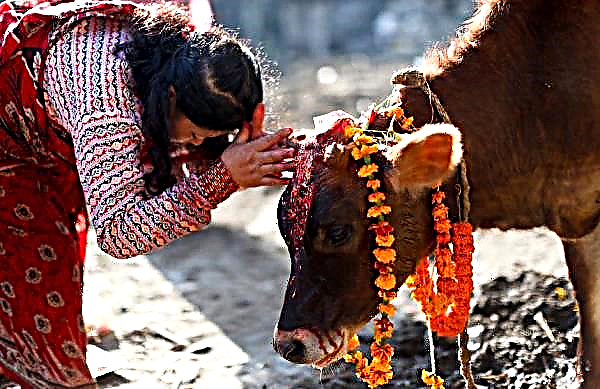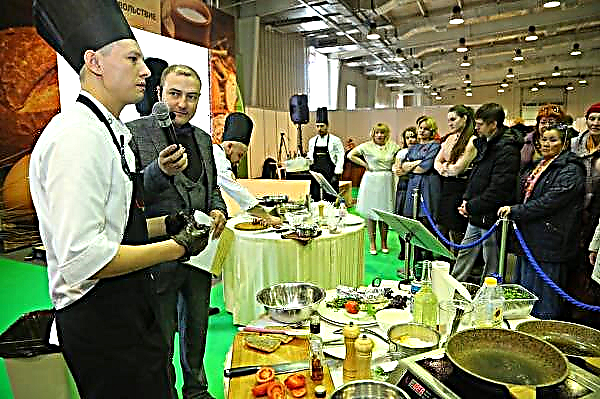Livestock maintenance takes up a lot of nerves and time. Not everyone is ready to do this professionally. A lot of costs are for feeding. To engage in sheep and sheep breeding, you must first familiarize yourself with all the requirements for grazing, feeding and watering flocks. Drinking and food ration of animals is not the same and depends on many factors and nuances.
What to feed the sheep: diet, what it depends on
An important role is played by the location of the flocks, the climatic conditions of livestock, as well as care. It is from such factors that the method of fattening depends. Basically, sheep farming is widespread in Russia, the Caucasus, Central Asia, Kazakhstan with huge pastures.
The more pasture, the longer the animals can graze. In this case, care for them will be minimal, since fresh herbs will be used for nutrition. Do not forget to drink the flock, using special containers and tanks for this.
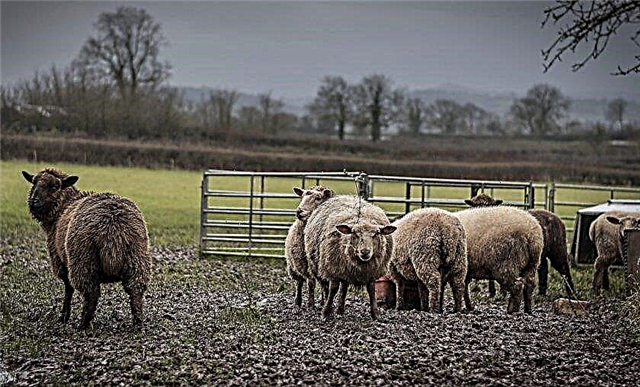
Climatic conditions also play a role. The most optimal are tropical and subtropical zones. Growing sheep is possible, both in hot conditions, and in cold, harsh. The temperature amplitude can vary from + 40 ° C to -40 ° C. Therefore, today there are many breeds that are able to join any terrain.
It is necessary to feed the flock in combination, using vitamin supplements, green grass, hay, vegetables, etc. With this variety, the animal will receive all the necessary useful components, vitamins and macrocells for maximum growth and body weight gain.
Important! It is not safe to feed the sheep with wet dew grass, since such a feed provokes bloating, which may result in a visit to the veterinarian.
Additional feeding of sheep with grain, hay or silage is necessary when there is not enough grassiness on the pastures, and in winter. In winter, juicy complementary foods (vegetables and fruits), as well as fresh grass, are almost completely absent, so the diet of animals must be enriched with foods rich in nutrients.
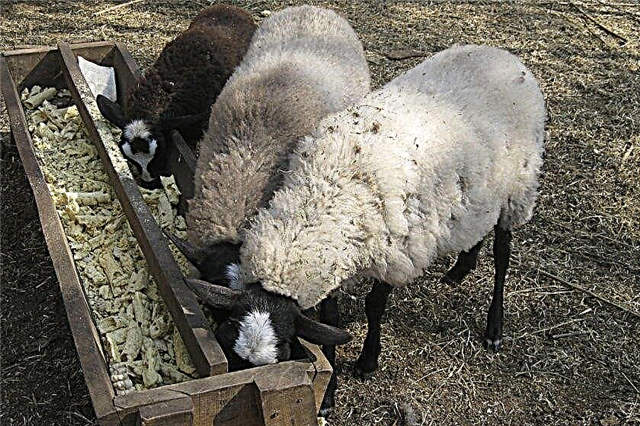
The selected auxiliary feeding program will allow sheep to grow, breed and generate income for the entrepreneur. In this case, you will have to use as much dry feed for the pen as possible, as well as provide enough food to maintain optimal growth. There are several types of feed, diets and norms for feeding sheep at home.
Hay
Balanced should be feeding animals. This takes into account what sheep eat, depending on the season, age category, and the purpose of their cultivation. The diet of sheep consists almost entirely of plant foods, since these animals are herbivores. As a rule, the herd spends most of the time grazing in the countryside and eats pasture, during which period the animals practically do not need additional feed additives.

It is necessary to include in the diet a lot of different products for complete feeding and development of young individuals, increasing the number of livestock. This is done at different times of the year, so the amount of complementary foods will be different. For example, with the advent of winter, hay will be at the heart of the diet, and in the summer - greenery.
If we compare the benefits of mowed grass, it is worth noting three species that contain even in dry form in their composition many vitamins and nutrients:
- clover;
- alfalfa;
- peas.
If stall maintenance is provided, then hay is one of the most basic products. The daily norm for one adult is from 2 to 4 kg, so in the summer you need to prepare the required amount of grass for haying.
Did you know? The largest number of nutrients in the herbs during flowering, so it is at this moment that you mow the grass in the hay.
Straw
Supplementary feeding is the feeding of food (usually grain, hay or straw) for sheep that feed on pastures. In the late summer and fall, feeding often becomes a replacement feed. As a variety in the diet, straw can be used instead of hay.
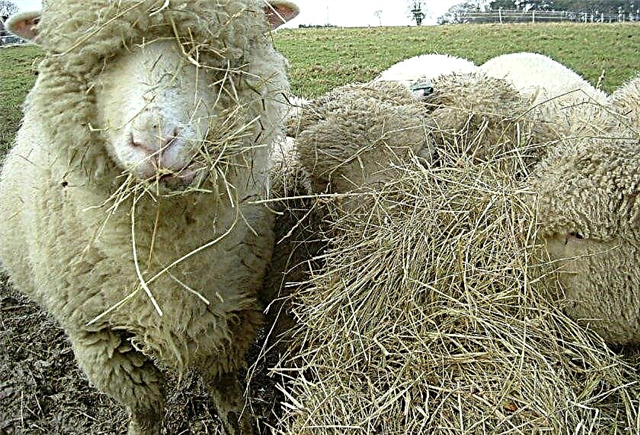
At the same time, it is worth remembering that this is not the best option, because excess straw will provoke an intestinal upset in animals, since it practically has no useful substances in its composition. If straw is added to sheep in the daily diet, then its quantity per adult must not exceed 2.5 kg, and on young animals - not more than 1 kg.
In this case, the straw should be from plants such as:
- oats;
- legumes;
- barley;
- millet.
Silage
Supplementary feeding is aimed at meeting the nutritional needs of sheep. It is especially important to prevent excessive loss of live weight during the dry feeding phase in weaners and pregnant sheep.
If sheep rearing is intended for meat production, you will have to make the correct calculations regarding the quality of the diet and the ratio in the protein supplement, which is rich in feed cereals, young grass, and legumes.

The most palatable for sheep is silage. It is used for the rapid growth of an animal. It is recommended to use a corn silo with legumes and roughage. In its composition, it practically does not give up hay. About 4 kg of such supplements can be given to the animal per day.
Important! When grazing sheep in the garden, you should avoid such a plant as a lily of the valley, since it is poisonous to the animal and can even cause death.
Compound feed
Compound feeds are used most often when the animal goes to slaughter. In this form of complementary foods there is everything necessary for rapid growth and body weight gain. The proportionality of the daily dose of feed is different, depending on the age of the animal.
For example, for an adult, it will be 0.5 kg, and for a lamb - 0.4 kg. When choosing such food, special attention should be paid to the manufacturer, since the quality of the feed will depend on this.

Vegetables: carrots, potatoes, fodder beets, gourds and fruits
The most useful and rich in vitamins, fiber, micronutrients and other nutrients complementary foods are vegetables, fruits and melons. In this case, fodder beets, potatoes and ordinary carrots are ideal.
These vegetables contain substances that help the animal resist disease and digest food well. The daily norm is 4 kg. In addition to vegetables, gourds - pumpkin and zucchini are rich in valuable composition. The daily norm for an adult is 4 kg. Of fruits for feeding animals, ordinary apples are mainly used.
Did you know? Silo can sour. This can be prevented by reducing the substrate moisture by up to 60% by adding dry straw.
Cereal
In cereal crops (grain) a lot of fiber. This should be remembered during the preparation of the daily ration for the sheep. If you overdo it with such complementary foods, the digestion in the animal may be impaired. Barley, oats, wheat - the main crops, the use of which is necessary.

Vitamin Supplements
It is possible to enrich the body of rams with useful substances and vitamins not only with the help of complementary foods, but also by adding synthetic vitamin supplements, for example Vitasol. Their daily rate should be correctly calculated for each individual, depending on age and gender.
Water
While keeping the sheep, the most important thing is their watering. Without sufficient water, the animal will simply fall ill and ultimately bring no benefit. Its quantity should always be sufficient. One individual per day can drink up to 10 liters of water.
Grazing: green feed
Green grass, weed, thorns, shoots that are eaten by sheep are the most ideal and budget option for keeping sheep. Pastures should be selected correctly, because throughout the year the properties of the grass are not the same. 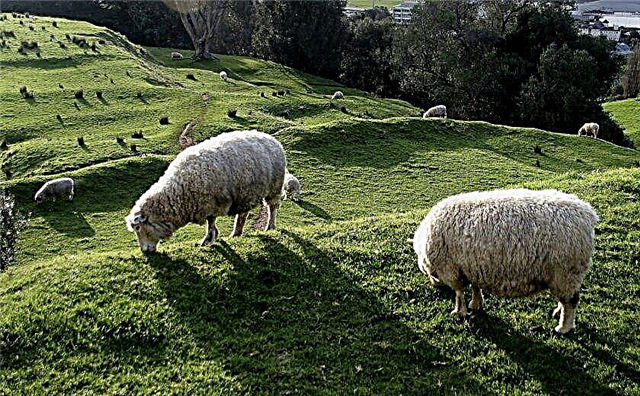 For example, it is better to drive the flock to elevated areas because, if you choose a lowland, it is not suitable for grazing due to swampiness.
For example, it is better to drive the flock to elevated areas because, if you choose a lowland, it is not suitable for grazing due to swampiness.
You can sow for green food oats, rye, corn, legumes or winter wheat. Such juicy food will certainly appeal to animals. Twigs, young pagons, and even trees are just perfect for animals.
Estimated daily diet
The composition of the daily diet is very complicated, because it depends on the number of livestock, its features and composition. For each individual, you need to individually consider the amount of water, animal feed and other components of the diet. In winter, spring, summer and autumn, all of the above feeds are included in cattle food.
Important! Trace elements such as selenium, iodine, copper and cobalt must be included in the diet of animals.
Their number will be different in different seasons and depending on the individual. If we consider in more detail the approximate calculation of complementary foods for a day, then for a breeding ram, lambing sheep and sheep after lambing, it will look something like this.
Daily ration data in the table:
| Tribal ram | Swan sheep | Sheep after lambing |
| Concentrates - 300 g | Concentrates - 600 g | Concentrates - 600 g |
| Grass and greens - 85% of the daily diet | Grass and greens - 85% | Grass and greens - 85% |
| Hay - 2 kg | High-quality hay - 0.5 kg | Hay - 1.5 kg |
| Juicy feed - 3 kg | Juicy feed - 3 kg | Juicy feed - 3 kg |
All three species of animals need special care, since an incorrectly formed supplementary feeding will adversely affect the productivity of the breeding sheep, as well as the sheep during lamb bearing and after lambing during lactation. As for lambs, young animals and individuals who are fed for meat, their diet will also be different.

An important role is played by the lambs milking. Often, feeding is done from bottles. The number of lambs fed up to 2 weeks of age 5 times a day, and young animals are reduced to 3 times a day. Individuals fattened for meat must be fed tightly and fully.
The table shows an example of daily allowance for home growing:
| Lambs | Young growth | Fattening for meat |
| Oat Concentrate - 50 g | Oat Concentrate - 100 g | Oat Concentrate - 300 g |
| Vegetables —0.5 kg | Vegetables - 0.7 kg | Vegetables - 1 kg g |
| Salt - 4 g | Salt - 8 g | Salt - 8 g |
| Hay - 0.5 kg | Hay - 0.7 kg | Hay - 0.8 kg |
Organization of intensive fattening of sheep
Sheep fattening must be properly planned. During the dry phase, pasture quality does not provide an accurate picture of how animals will gain weight. The only practical way to achieve the goal of producing sheep through supplementary feeding is to regularly monitor the weight of the animals to determine if complementary foods are sufficient.
Did you know? In order for the sheep to gain weight, it is necessary to immobilize it as much as possible, that is, limit movement on the corral.
In the pasture
During the keeping of sheep on pastures it is also necessary to feed them, especially during the period of grassiness reduction. Do not forget about the constant availability of water. 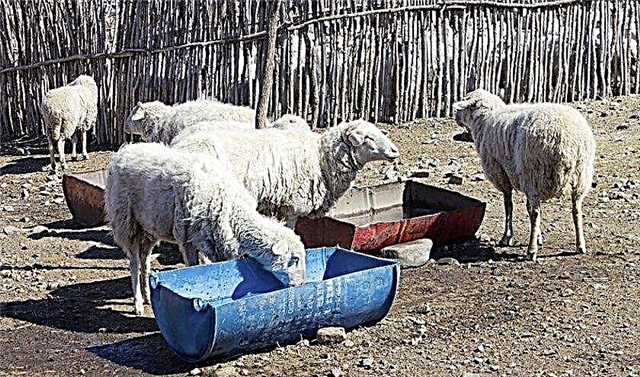 It is necessary to introduce into the diet a feed with a high coefficient of protein content, which is in peas, barley and corn, with its help the animal will quickly gain weight. Vegetables, shoots and branches of trees are also worth giving constantly.
It is necessary to introduce into the diet a feed with a high coefficient of protein content, which is in peas, barley and corn, with its help the animal will quickly gain weight. Vegetables, shoots and branches of trees are also worth giving constantly.
In the stall
If winter has come, then the cattle will be constantly in the pen and kept in a stall. Feeding in such conditions is even easier than in pastures.
Check out

It is necessary to correctly distribute what and when to give, so that the animal receives the maximum benefit.
Combined feed, silage and other feed composition options can be given in the following set and in the sequence:
- hay in the morning;
- hay, concentrates and plentiful watering during the afternoon;
- hay combined with succulent food at 4 p.m.
- hay with concentrate in the evening.
Observing the correct diet and its proportionality, you can prepare an adult for slaughter in 5 days, adding a good weight gain to the bulk.

